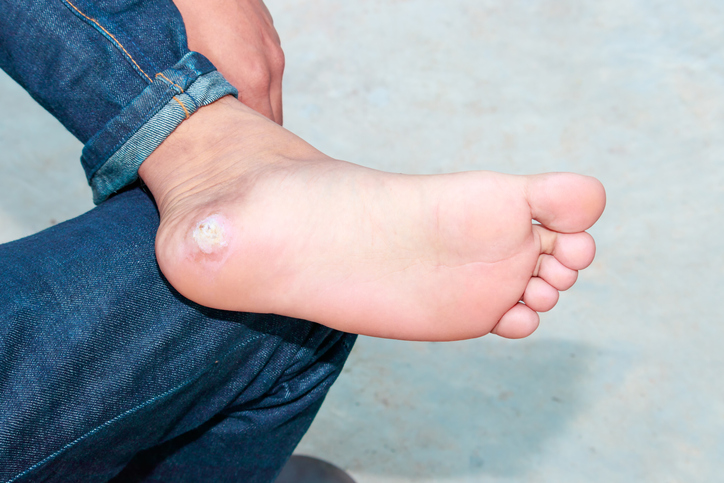Common skin warts are raised oval growths on the skin that are caused by a virus (human papillomavirus [HPV]). They can be skin-colored or darker. Some warts may have tiny black dots in them which are actually clotted blood vessels. One can be infected by the virus through direct contact with the wart (i.e. touching or rubbing your skin against it). The virus is more likely to infect injured or softened (usually by water/moisture) skin and it can take up to 6 months to develop a wart after exposure.
Skin warts


Skin warts are most commonly seen in children and young adults. People who handle meat, fish and poultry frequently are also infected with the virus more often. Not because the virus is present in these products but because their hands are often wet and the virus could easily infect their skin. People with chronic conditions such as eczema or a weakened immune system (e.g. AIDS or after an organ transplant) are also prone to developing warts.
Common skin warts can occur anywhere in our body but are often seen on the fingers, hands, knees and elbows. When they are located around the nails, they are called periungual warts. These warts enlarge and affect nail growth if left untreated.
Feet warts


Warts on the soles of the feet are called “plantar warts.” They can be particularly bothersome because they can be painful and deep rooted which makes it difficult to walk. Warts that infect the genital area are called “genital warts.” These are sexually transmitted and may be a leading cause of cervical cancer in women. An HPV vaccine is now available to protect sexually active women from this virus.
Flat warts


Flat warts are commonly seen on the face. Several people come to a clinic (or even salons) to have their facial warts removed. The question is, are they really warts? Warts do not need any special diagnostic tests but a biopsy would definitely clinch the diagnosis.
Skin warts can usually be diagnosed based upon how they look and this will be totally dependent on the expertise of the person examining it. Thus, it is of great importance to have a certified dermatologist check them.
Mimic
What can mimic a wart on the face? There are many lesions that can be mistaken for a facial wart. The most common of them would be moles and a benign growth on the skin commonly seen in asians (Filipinos in particular) and blacks called “dermatosis papulosa nigra (DPN)” or seborrheic keratosis.
DPNs are very common among kabayans and I would say the most common lesion mistaken for a “wart.” Fortunately, removing a wart and a DPN requires the same method. However, DPNs are not caused by a virus and are not infectious. There are people who are particularly prone to having them and if removed, they can develop new ones again.
Treatments
Many treatment regimens are available for warts but treatment depends upon where the wart is located and how much it bothers you. Treatment may not always be necessary in all cases because about two-thirds of skin warts will resolve on its own.
The best treatment will depend upon you and your healthcare provider’s preferences. Underlying medical problems should also be investigated if necessary. It may take several weeks or even months to treat a wart, especially plantar and periungual warts. Warts are notorious for recurring after treatment.
Home treatment regimens discussed online, such as salicylic acid, may be beneficial to many types of warts if used correctly.
People with neuropathies (nerve damage that causes numbness) should not use these home remedies since it can make their problem worse. There are also prescription treatments available and these can be discussed with you by your healthcare provider.
“Cautery” is a favorite treatment for warts (especially among Filipinos) and this should be performed only by a competent specialist since it may lead to problems such as scarring and infection.
Recurrences
You also have to be sure it is a wart that is being removed. Recurrences may be alarming and if you are not properly advised, this can be a stressful situation. Rarely, skin cancers can be mistakenly cauterized (mostly by non-specialists) and this can lead to a lot of complications later on.
By: Dr. Benjamin B. Bince
Lastly, you should consult your healthcare provider if:
• You are not sure if your skin growth is a wart
• Your skin wart did not improve with home treatment regimens
• You would like to use home treatment, but you are not sure which treatment is right for you
• You have been treated for warts and have developed signs of a skin infection, such as redness, pain, or pus-like drainage from the treated area
About the author
Dr. Benjamin B. Bince is specialist dermatologist at Klinika Maharlika in Dubai. He is available, Saturday to Wednesday from 11 a.m. to 8:30 p.m.





